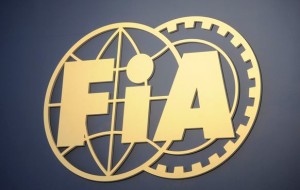
It has always been recognised and celebrated that Formula 1 has some of the most complex and advanced engine technology in the world. It’s a sport of innovation after all and the introduction of hybrid engines for 2014 well and truly proved that. Last year, Formula 1 went racing on a third less fuel than in 2013 with a 1.6 litre turbo engine and still it produced quicker cars.
It didn’t quite go to plan as far as it being an all-out nail biter between the teams. Instead the rest of the field watched forlornly and from a considerable distance as Mercedes thrashed the lot of them and strolled to both championship titles. Mercedes’ enormous 2014 advantage emanated mostly from an exceedingly superior power unit which left rival manufacturers shamefaced.
Throughout the year Ferrari and Renault fought hard for permission to introduce upgrades during the 2015 season. As a change of rules can only be achieved through a unanimous decision by the teams Mercedes’ refusal to yield seemingly put an end to Ferrari and Renault’s hopes. Yet, for as much as F1 is known by its advanced technologies, the rules that ‘govern’ the sport seemingly has an infinite amount of grey area. You would think that for as long as these experts have been sitting around shiny boardroom tables they’d by now have an idea of how to create a rule that leaves no wiggle room for the infinitely brighter teams. Instead the engine homologation rule is saturated with enough grey area to make you cringe.
 At a meeting with the FIA in Abu Dhabi Ferrari technical director James Allison pointed out that the lack of an exact date by which the final 2015 engine must be lodged. Subsequently, and to appear less dense, the FIA have told teams that the “most logical and robust” way to proceed would be to assume that there is no homologation date for the 2015.
At a meeting with the FIA in Abu Dhabi Ferrari technical director James Allison pointed out that the lack of an exact date by which the final 2015 engine must be lodged. Subsequently, and to appear less dense, the FIA have told teams that the “most logical and robust” way to proceed would be to assume that there is no homologation date for the 2015.
Honda has been purposefully left out of the equation because according to the rule a new manufacturer must homologate its engine by 28 February 2015. The Japanese manufacturer in partnership with McLaren feels it is “unfair” to allow its opposition to make progress while its own power unit will remain unchanged throughout the season.
You would think that this means Renault and Ferrari powered cars will have a good and proper shot at the Mercedes. Few things have ever been that uncomplicated in Formula 1 and this is no exception. This is a win for Ferrari and Renault but it’s a relatively small one. Bear in mind how the development of the engine is divided and that in-season development and upgrades are not a free for all. On its introduction in 2014 only 92 % of the hybrid engine was open for development. From here, manufacturers selected 48% to develop. This 48 % is split into 32 tokens which are assigned to various parts of the engine. The various sections each carry a value of one to three tokens depending on its influence on performance.
 Now there is the regulation surrounding the homologation which itself has led to several wordless moments of some pretty hefty squinting and head-tilting. Rule 28.5 states that “only power units which have been homologated by the FIA…may be used at an Event during the 2014-2020 Championship seasons.” This rule makes no explicit mention of how many engines can be homologated per year. It is clear however that for an engine to be used during a race weekend it must be homologated. Should this rule be applied as it’s read it would mean that teams have several opportunities throughout the year to bring upgrades to their engines, to homologate as they go. Keep in mind that each driver will only be allocated four engines for the entire season which brings into play the certainty of a grid penalty with each engine change after the allotment.
Now there is the regulation surrounding the homologation which itself has led to several wordless moments of some pretty hefty squinting and head-tilting. Rule 28.5 states that “only power units which have been homologated by the FIA…may be used at an Event during the 2014-2020 Championship seasons.” This rule makes no explicit mention of how many engines can be homologated per year. It is clear however that for an engine to be used during a race weekend it must be homologated. Should this rule be applied as it’s read it would mean that teams have several opportunities throughout the year to bring upgrades to their engines, to homologate as they go. Keep in mind that each driver will only be allocated four engines for the entire season which brings into play the certainty of a grid penalty with each engine change after the allotment.
On the other hand, if the rule is to be interpreted differently it means that once an engine has been homologated for 2015 no changes can be made to it at any stage. By this understanding the advantage of the loophole is only a few extra weeks of development before the start of the season in Australia. Furthermore, up until an engine has been lodged with the FIA, for homologation, the 2014 engine will be the only option to run with. New rules are created to bring clarification, they said.


